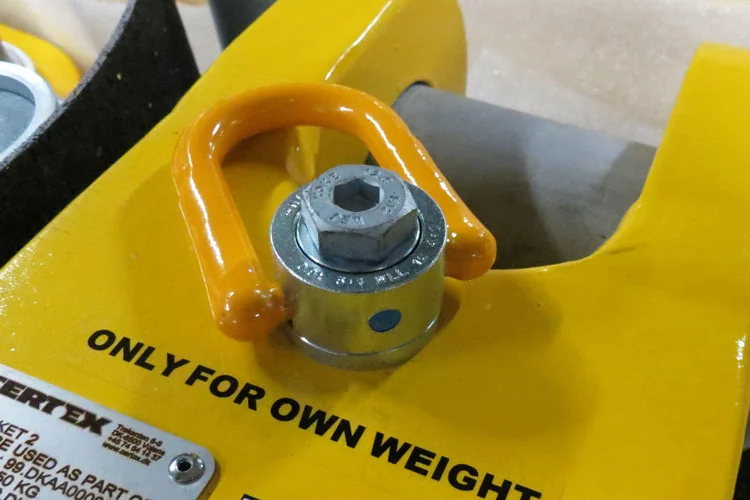How to use lifting components correctly

Understanding the use of lifting components in rigging tasks
For safe and accurate lifting operations, selecting the right lifting components is essential for both precision and safety. Equally important is knowing how to use these components correctly. The term "lifting components" encompasses items like swivel eyebolts, eyebolts, and lifting points (both swivel and welded). These lifting points serve as attachment points for equipment such as hooks, chains, straps, ropes, or slings on the object you need to lift or handle.
Let’s explore the significance of lifting points and their critical role in ensuring safe and efficient lifting operations.
Selecting the right lifting component for your task
To choose the most appropriate lifting component for your task, consider the following:
Understand the characteristics of the load
Begin by analyzing the load's weight, shape, and center of gravity to determine the most suitable lifting points. Different loads may require specific lifting configurations to ensure stability and even weight distribution.
Consider environmental factors
Take into account environmental conditions such as temperature, exposure to corrosive elements, or dynamic movements. These factors can impact the selection of lifting components, so it's crucial to choose components that can endure the environmental challenges of the lifting operation.
Consultation and expertise
For complex lifting operations or if you're uncertain about the suitability of your selected lifting components, consult with rigging experts or engineers. Our experts at Certex Norge AS can provide calculations and help you select the most suitable equipment for your lifting task.
The role of lifting components
Lifting components serve various functions during a lifting operation, including:
Load distribution
Lifting components primarily act as anchoring points for slings, hooks, or other lifting equipment. They play a crucial role in evenly distributing the load's weight across the lifting equipment, ensuring stability and balance throughout the lifting maneuver.
Versatility and adaptability
Lifting components come in various designs and configurations to accommodate different loads and rigging setups. Selecting the right lifting component, whether it's a fixed eyebolt, swivel eyebolt, or weld-on point, is crucial for optimal performance and safety. Certex Norge AS offers a wide range of lifting components to meet your specific lifting requirements.
Safety and reliability
Properly selected and installed lifting components significantly increase the safety and reliability of lifting operations. Ensuring that lifting components meet load requirements and are in optimal condition is critical to preventing accidents and equipment failure.
Best practices for lifting components
Like all lifting equipment, certain key points should be observed to ensure safe and effective use.
Regular inspection and maintenance
Perform regular visual inspections of lifting components to check for wear, corrosion, or damage. If you notice any issues or are uncertain about the condition of the equipment, clearly mark it as out of service and have it examined by a qualified professional. Adhering to statutory service inspections is also essential to ensure ongoing safety standards.
Load testing and compliance
Conduct load tests to ensure the lifting component can handle the selected loads. Comply with standards and regulations regarding the use of lifting components. Certex Norge AS offers load testing.
Correct installation of lifting components
Ensure lifting components are installed according to the manufacturer’s guidelines. Incorrect installation can weaken their integrity and increase the risk of accidents during lifting operations. Always follow the recommended procedures for installation to maintain safety and effectiveness.
The importance of choosing and using the correct lifting components in lifting and rigging operations cannot be overstated. They are fundamental to ensuring stability, balance, and safety during any lifting task.
By following the advice provided, you'll be well-equipped to make the right choices.
Keep in mind that investing time in selecting and maintaining reliable lifting components is an investment in your staff's safety, your company's efficiency, and your success in lifting and rigging tasks.

Do you wish to know more about our Lifting KnowHow? Please reach out.
For faster response, call us directly at +47 66 79 95 00!
Proper use of lifting componentsLearn how to use lifting components correctly by reading this guide. You'll also find tips on selecting the best lifting components for your needs. |
Learn more |
Selecting the right shackleThis article outlines the various types of shackles and provides guidance on choosing the best model for your specific needs. |
Learn more |


